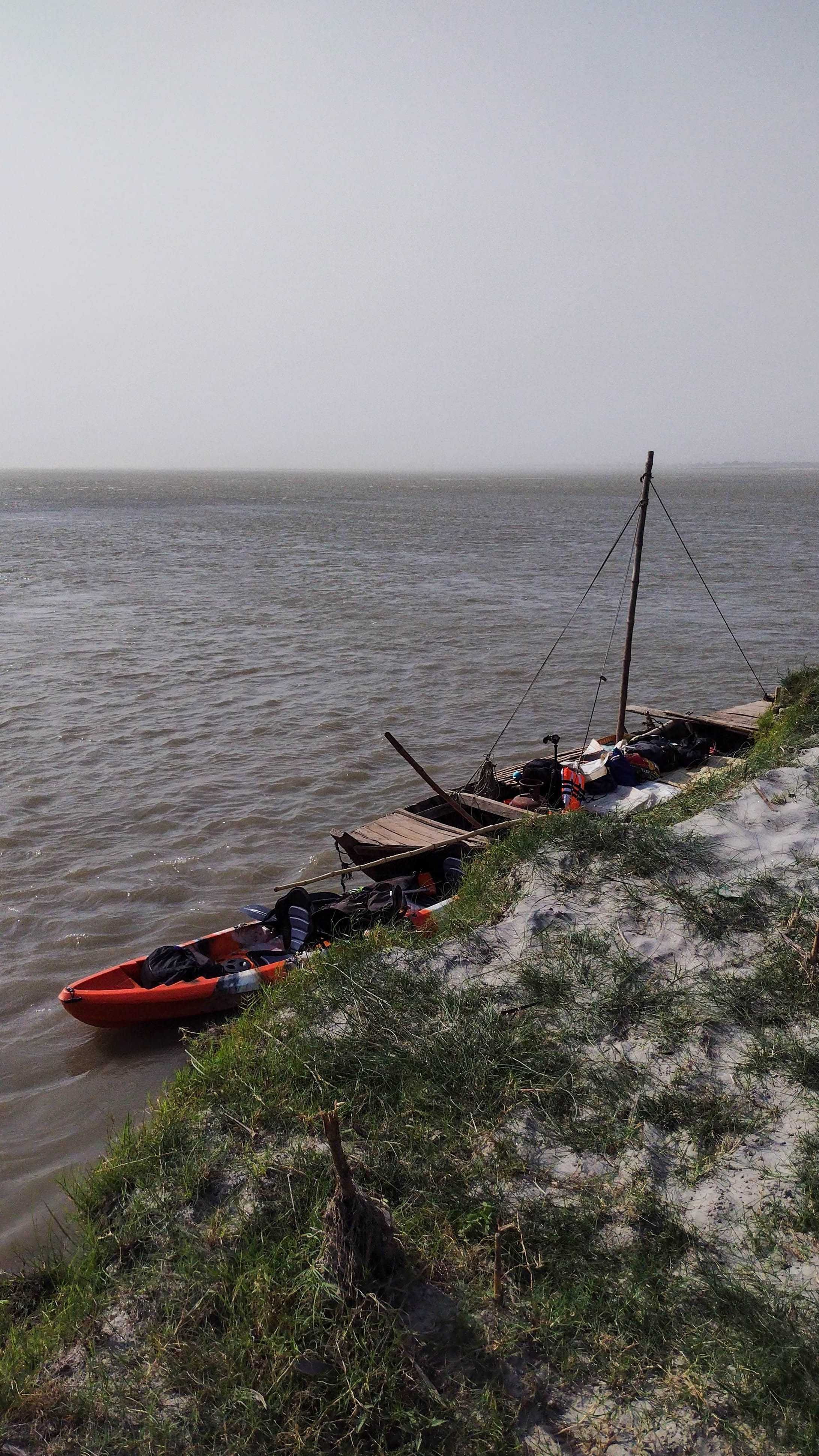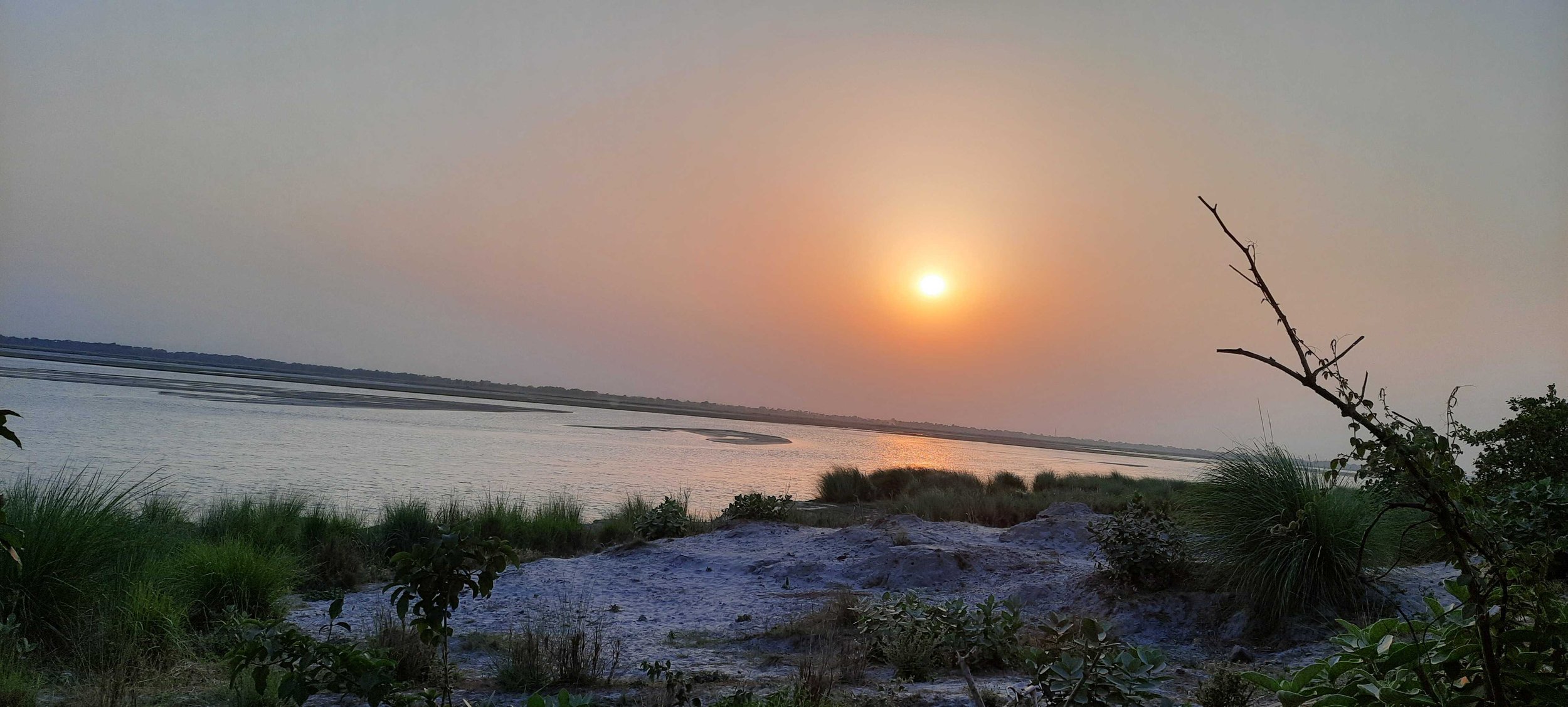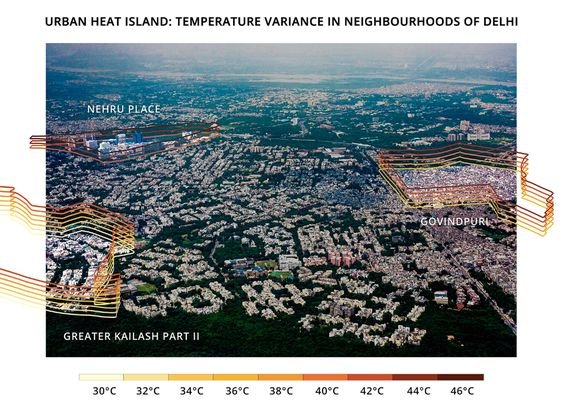In March, 2022 I was thrilled to find out that we were headed for a field trip to Bihar. I was excited for many reasons, including that this was going to be my first field trip with Technology for Wildlife Foundation - the experience of travelling to Bihar, encountering gharials and dolphins, the beauty of the Gandak (tributary of Ganga) and my first drone flight. The trip aimed to study the behaviour of gharials and Ganges river dolphins in the Gandak river during pre-monsoon season when the water levels of the river are shallow.
On the 15th of April, 2022, my colleagues and I left for our field trip to Bihar. We landed in Patna early that day and were later joined by our collaborators from Wildlife Conservation Trust (WCT). Together, we started for Bagaha - our field site, an amazing seven hour drive from Patna. It was the peak of summer and we needed to constantly hydrate ourselves. I was slightly tired of the heat and was trying hard to keep awake. Nevertheless, the Gangetic floodplains kept me in awe for the most part.
The next morning we left to survey the river after having chai and chole puri for breakfast. After setting up the boat with a CPOD (Cetacean and Porpoise Detection) to collect data on dolphin frequencies and other activity in the area, all of us hopped onto the boat to begin our survey. Our objective was to identify a good stretch of the river which could be the field site, a site with a good number of gharial and Gangetic river dolphin sightings. This boat ride was especially beautiful and memorable. We were in the middle of the vast stretches of the Gandak and its floodplains. The quietude of the Gandak was addictive. At one point, there was a large enough sandbar for us to hop-off the boat, where we tried flying a kite as the wind was on our side. The idea was to mount a camera and a GPS device to track the route to record features in such terrains. This was so much fun; we would probably try mounting the camera on our next field trip. The halt lasted for a good half an hour, after which we resumed the survey. By the evening, we were able to finalise the field site. We also spotted many birds, some turtles and gharials (thanks to binoculars), and a few dolphins! The day came to an end with a beautiful sunset by the river Gandak.
Our ride in the river Gandak. Image: Nancy Alice/ TfW.
The following day we arrived at the field site and prepped to fly the drones over gharials basking under the sun. We didn’t mean to disturb them but they were quite sensitive and would promptly glide back into the water when they heard our activities. We worked out how to operate our drones and observed them happily without creating any disturbance. Drone-flying seems like an elegant art, from setting its orientation, launching it to getting it back to us. After a few flights by colleagues to observe gharials, I was prompted to fly it back home, with a brief primer on the controls. This was my first attempt with the drone and I was still learning how to navigate it. The toughest part though, was not being able to see the screen under such sunny conditions, and to keep a track of the battery. One of my colleagues, Shashank kept referring to video games as the best practice to have a better understanding of drone controls. Hence, video games and drone flying are up next on the bucket list for me.
Most gharial captures were smooth as they would be basking on the sandbars, so they were clearly visible. The dolphin captures were comparatively more spontaneous and calculated. Among others, we had identified a mother and baby dolphin in our field site. Its sightings would be frequent at certain times during the day. If the weather was not windy at those times, we flew the drones over them to observe and were able to capture them swimming happily. These captures were delightful. It would often start with one of us spotting some frantic splashes in the water followed by a confirmation from the binocular personnel and then the drones launched. Spontaneous and almost ticklish! We analysed the drone videos the following day and worked on making drone transects for better video capture of gharials and dolphins. Over the days that followed, we flew the drones in pre-programmed transects and analysed the imagery for sightings. I remember having a good long conversation with Shashank, where he was explaining the legal rules of drone flying. It cleared a lot of doubts on safe and sustainable drone flying.
In conclusion, the field site was beautiful! Oranges, cucumbers and bananas kept us happy amidst the summer days. We would often catch the sunset by the river. Even on the last day at the field site, we sat by the banks and gazed at the beauty of the river. The river was super gracious to let us peep into some of the life it housed and for the unforgettable sunsets.
Sunset at the field site.
The next day we drove to the Valmiki Tiger Reserve at the India-Nepal border. The temperatures dropped slightly enroute to the reserve. After ten days of gazing at floodplains, we were then resting our eyes upon the Shivalik ranges at the horizon. We took a safari at the tiger reserve and it was calming to go around the trees. We spotted a number of avian beauties in the reserve - Emerald doves, Orange-headed thrush and the Paradise Flycatcher. Towards the end of the safari, we experienced mild showers, followed by hail stones. We rushed inside a temple complex to take shelter. Although brief, this little encounter with the temple was memorable.
Author at the banks of the river Gandak. Nancy Alice/ TfW
The trip was a great learning experience for me and I am grateful for this opportunity. One of the greatest takeaways would be the discussions with my colleagues and collaborators about their journey through conservation and their love for the wild. While I reminisce over the memories of Gandak, I look forward to my next trip and hopefully as a trained drone pilot!










